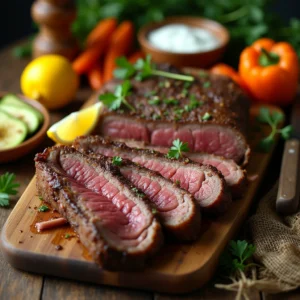
Introduction
San Sebastian Cheesecake, also known as Burnt Basque Cheesecake, has taken the dessert world by storm. Originating from the Basque region, specifically La Viña restaurant in San Sebastian, this cheesecake is famous for its rich, caramelized exterior and velvety center.
For those who love adding unique twists to classic recipes, you might want to explore this easy variation with a pumpkin twist.
Table of Contents
The History of San Sebastian CheesecakeOrigins and Evolution
San Sebastian Cheesecake, also known as Burnt Basque Cheesecake, was first created in the 1990s by chef Santiago Rivera at La Viña restaurant in San Sebastian, Spain. Unlike other cheesecakes, its burnt exterior and creamy center was born from baking at high temperatures, an unconventional method that became its defining feature. he dessert rapidly gained popularity with both locals and tourists, capturing the interest of culinary enthusiasts around the globe.
Cultural Significance
In the Basque Country, food is a cherished tradition that emphasizes rich, hearty flavors. San Sebastian Cheesecake embodies this with its simple ingredients and impressive results. The dessert is a reflection of the region’s knack for turning modest ingredients into extraordinary dishes, making it a staple in both Spanish and global gastronomy.
What Makes San Sebastian Cheesecake Special?
This cheesecake stands out with its burnt, crustless top and creamy, gooey middle. Unlike traditional cheesecake, which can be dense and overly sweet, the San Sebastian Cheesecake has a delicate balance of flavors.
Ingredients and Equipment
Ingredients
Prepare these essential ingredients for the cheesecake:
| Ingredient | Quantity |
|---|---|
| Cream Cheese | 500g |
| Heavy Cream | 250ml |
| Sugar | 200g |
| Eggs | 4 large |
| All-purpose Flour | 1 tbsp |
| Vanilla Extract | 1 tsp |

Equipment Needed
- Springform pan (8-10 inches)
- Parchment paper
- Mixing bowls
- Electric mixer
Step-by-Step Recipe
Preparation Steps
- Preheat your oven to 220°C (428°F).
- Place parchment paper inside a springform pan, ensuring it lines the sides and extends over the edges for easier removal.
Mixing the Batter
- In a large bowl, Mix the Batter and whip the cream cheese until it achieves a smooth, creamy texture
- Gradually incorporate the sugar and blend until fully mixed.
- Add the eggs one after one, mixing thoroughly after each addition to ensure they are well incorporated before proceeding to the next.
- Gradually pour in the heavy cream and gently mix in the vanilla extract.
- Gently fold in the flour after sifting to achieve a smooth mixture.
Baking
- Transfer the batter to the lined pan.
- Bake until the top becomes golden brown and the center remains slightly jiggly. (50-60 minutes)
Cooling and Serving
- Allow the cheesecake to cool for 2 hours before serving to achieve the best texture.
Pairings and Serving Suggestions
Pair the cheesecake with a honey pepper pimento chicken sandwich for a mix of sweet and savory.
Expert Tips from Professional Chefs
Chef Insights
Professional chefs who specialize in Basque desserts often emphasize that the secret to a perfect San Sebastian Cheesecake lies in using high-quality cream cheese and ensuring the ingredients are at room temperature before mixing. This ensures a smooth, lump-free batter that results in even baking.
Common Questions Answered
- Why does my cheesecake sink? Chefs suggest not opening the oven door too early and letting the cheesecake cool slowly to prevent sudden temperature changes.
- How do I prevent cracks? Avoid overmixing the batter to keep air bubbles at a minimum and use a water bath technique if needed.
How to Adapt San Sebastian Cheesecake for Special Diets
Vegan Version
For those following a vegan diet, substitutes can include:
- Vegan cream cheese and coconut cream for the main batter.
- Flaxseed eggs (1 tbsp flaxseed meal + 3 tbsp water per egg) to replace traditional eggs.
- Use maple syrup or agave nectar as a substitute for sugar.
Low-Carb/Keto Adaptation
Replace traditional sugar with erythritol or monk fruit sweetener, for a gluten-free, low-carb version use almond flour instead of all-purpose flour. Adjust the baking time slightly to ensure the batter sets without overbaking.
Top Flavor Enhancements
Savory Twists
For a unique spin, consider incorporating a touch of rosemary or thyme into the batter for an aromatic and sophisticated taste. These savory herbs create a beautiful contrast with the cheesecake’s creamy, slightly sweet profile.
Sweet Additions
Blend white chocolate chips into the batter or swirl in dulce de leche before baking to enrich the flavor and add depth.You can also fold in a small amount of caramelized banana slices for a tropical twist.
Storage and Leftover Recipe Ideas
Best Storage Practices
To store San Sebastian Cheesecake, wrap it securely with plastic wrap or place it in an airtight container. It can be kept in the refrigerator for up to 3-4 days. For longer storage, freeze individual slices by wrapping them in parchment paper, followed by foil, and placing them in a freezer-safe bag for up to a month.
Creative Uses for Leftovers
Transform leftover cheesecake into:
- Cheesecake Parfaits: Layer crumbled cheesecake with Greek yogurt and fresh berries for a quick dessert.
- Cheesecake Milkshakes: Blend a slice with a scoop of vanilla ice cream and milk for a decadent shake.
Comparative Guide to Other Cheesecakes
Differences from Classic New York Cheesecake
San Sebastian Cheesecake is less dense and lacks a crust, unlike New York cheesecake, which is known for its sturdy, thick base. The burnt, almost caramelized top of the San Sebastian Cheesecake creates a contrast in flavor that the New York version lacks.
How It Compares to Japanese Cheesecake
Japanese Cheesecake is airy and fluffy, relying on beaten egg whites for its light texture. In contrast, San Sebastian Cheesecake is denser with a more custard-like center, offering a richer mouthfeel.
Cooking Time Variations
Adjusting for Different Oven Types
- Convection Oven: Reduce the temperature by about 20°C (36°F) to avoid overbaking.
- Gas Oven: Be mindful of uneven heat distribution; rotate the cheesecake halfway through baking for even results.
- Microwave Convection: Ensure the microwave is set to convection mode and monitor closely, as baking times may vary.
Mini Cheesecakes
To make individual-sized San Sebastian Cheesecakes, divide the batter into small ramekins and reduce the baking time to 25-30 minutes. The top should still be deeply golden brown with a slightly jiggly center.
Common Mistakes and How to Fix Them
Top Baking Errors
- Overbaking: Leads to a dry and cracked top. Always take the cheesecake when the center is still jiggly
- Underbaking: Results in a runny center. Ensure the edges are firm with only the middle wobbling slightly.
- Burnt Flavor: While a burnt top is desirable, an overly burnt flavor means the oven temperature was too high or the cheesecake was left in too long.
Quick Solutions
- If Overbaked: Add a layer of whipped cream or fruit compote to help mask the dry texture.
- If Underbaked: Place back in the oven for an additional 5-10 minutes, monitoring closely.
FAQs About San Sebastian Cheesecake
Why is it called San Sebastian Cheesecake?
It is named after its birthplace, San Sebastian, Spain, known for its rich culinary traditions.
How do I store leftovers?
Keep it in an airtight container in the refrigerator for up to 3 days. If you have extra pumpkin from a recent dessert, learn how to freeze pumpkin for future preparations.
Conclusion
San Sebastian Cheesecake is a straightforward yet elegant dessert, ideal for any occasion. Whether enjoyed solo or as a complement to a savory dish like the chicken shawarma bowl, it’s sure to impress.



